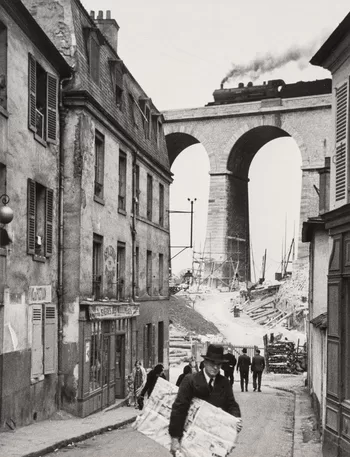André Kertész (1894–1985) was a Hungarian-born photographer known for his significant contributions to the field of photography, particularly in the areas of street photography and fine art photography.
Kertész is an important photographer who had a direct influence on Henri Cartier-Bresson and Weegee. He is remembered for his insightful street photos and his distorted images using special mirrors used in fun houses to mimic the deformed humans being painted at the time by Picasso. He was a precursor to the “decisive moment” philosophy later popularized by Henri Cartier-Bresson.
“We all owe something to Kertész,” said photographer Henri Cartier-Bresson. “Each time Andre Kertész’s shutter clicks, I feel his heart beating.”
Born on July 2, 1894, in Budapest, Hungary, Kertész began taking photographs in his teens. He served in the Austro-Hungarian Army during World War I and then moved to Paris in 1925.
In Paris, Kertész became part of the vibrant artistic community of the time, associating with prominent figures like Piet Mondrian, Marc Chagall, and Fernand Léger. His work from the 1920s and 1930s captured the essence of everyday life in Paris and is characterized by a unique blend of spontaneity, composition, and a keen eye for geometry.
Kertész was able to support himself and a photographer and journalist ifor German and French periodicals and pciture weeklies such as the new Vu magazine.
Kertész immigrated to the United States in 1936 to avoid the rise of the Nazis in Europe. In the later part of his career, he continued to produce influential work and received recognition for his artistic contributions. His photographs span a range of subjects, from portraits and nudes to still lifes and abstract compositions.
André Kertész’s work has left a lasting impact on the history of photography, and he is regarded as one of the masters of 20th-century photography. His legacy continues to influence photographers and artists to this day.
Kertész was a pioneer of the Leica camera
Kertész used a Leica camera, showcasing his technical innovation and early adoption of advanced photographic equipment. The Leica’s lightweight and portable design allowed for spontaneous and discreet image capture, contributing to the candid and unposed nature of the scene.
Kertész’s use of the Leica camera, a compact and portable 35mm film camera, allowed him to explore new perspectives and capture candid moments on the streets, showcasing the camera’s lightweight and user-friendly design. The Leica camera was quickly embraced by photojournalists.
André Kertész created a vast body of work throughout his career, producing many iconic and influential photographs. Here are a few of his famous photos:
Meudon, France, 1928
“Meudon, France, 1928” by André Kertész unveils a seemingly ordinary street scene, skillfully captured with a Leica camera. It is a captivating photograph that invites viewers to delve into its layers of complexity and subtle storytelling.
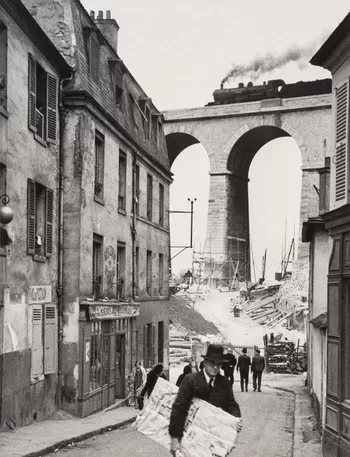

The photograph reveals a dynamic, nuanced composition with the steam train at the top of the frame and the man carrying a package at the bottom conveying a feeling of motion in different directions. This gives the photograph energy and a lively quality.
The traditional street scene unfolds in the foreground, while in the background, the march of machinery and construction dominates. This duality creates a narrative tension, symbolizing the encroachment of modernity into everyday life during the 1920s.
A man, possibly the German painter Will Baumeister, carrying a canvas adds an intriguing element. His presence introduces a layer of mystery and narrative potential. The act of carrying a canvas suggests the intersection of art and daily life, blurring the boundaries between the two.
The dominance of machinery and construction in the background literally overshadows the more traditional street scene unfolding in the foreground, symbolizing the relentless march of progress during that era.
André Breton, the leader of the Surrealism movement, eloquently described the image as possessing an “opportune magic” and a “convulsive beauty.” As a meta-narrative, the photograph narrates the visual story of modernity encroaching upon everyday life in the 1920s. The photograph transcends mere documentation, prompting viewers to contemplate deeper meanings and symbolic representations within the captured moment.
“Meudon, France, 1928” is a masterful composition that goes beyond a simple street scene. André Kertész’s keen eye for composition, use of innovative photographic techniques, and ability to convey deeper narratives through his images contribute to the enduring impact of this photograph in the realm of art and documentary photography.
“Chez Mondrian” (1926) & “Satiric Dancer” (1926)
Paris in the 1920s was the world’s centre of art deco, dada and surrealism
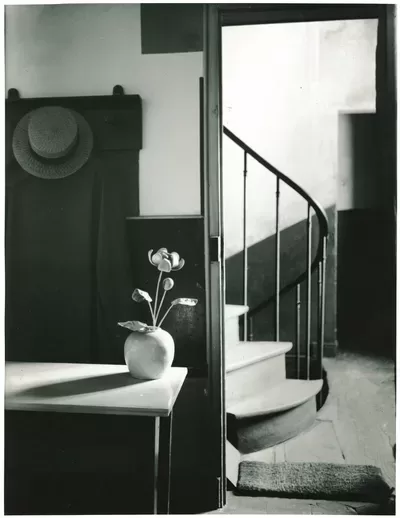

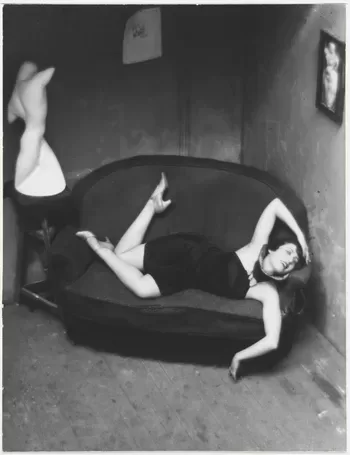

“Chez Mondrian” (1926): This photograph captures the interior of Dutch painter Piet Mondrian’s studio in Paris. Kertész’s composition skillfully integrates the geometric patterns of Mondrian’s abstract art with the everyday objects in the room.
“Satiric Dancer” (1926): This image features a satirical take on dance at the beginning of the Art Deco movement. It reflects Kertész’s interest in experimental and surrealistic photography. There are a few variations of this photo from the same photo session.
“Underwater Swimmer” (1917) & “Martinique” (1972)
These two photographs, made more than 50 years apart, show that Kertész was looking for the light to add texture and depth to his photographs. He skilfully creates a mystical quality to allow the viewer’s imagination to interpret his photographs.
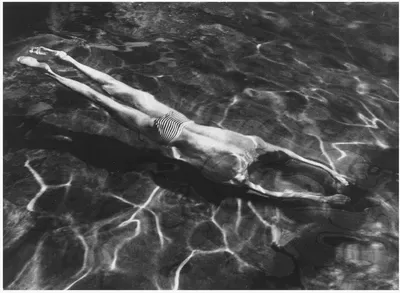

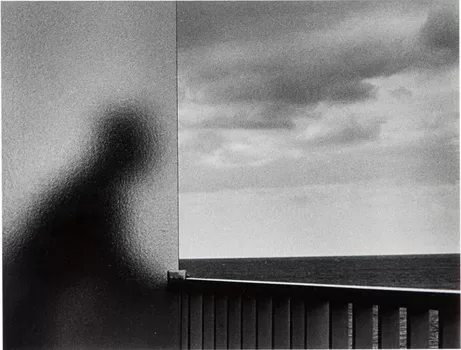

“Underwater Swimmer” (1917): This early photograph showcases Kertész’s experimentation with underwater photography. It captures the graceful movement of a swimmer beneath the water’s surface, demonstrating his innovative approach to the medium.
“Martinique” (1972): In his later years, Kertész continued to produce powerful images. “Martinique” is a striking black and white photograph that captures the essence of the Caribbean island. The image combines elements of nature and human presence, showcasing Kertész’s timeless and versatile style.
“Fork” (1928) & “Distortion #40” (1933)
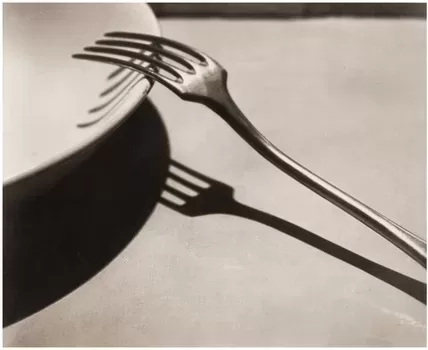

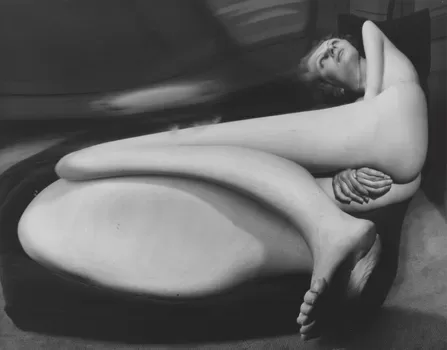

“Fork” (1928): This still life photograph showcases Kertész’s ability to find beauty and intrigue in everyday objects. The composition of a fork against a patterned background exemplifies his talent for transforming ordinary subjects into compelling visual narratives.
“Distortion #40” (1933): As part of his series on distortions, this photograph features a woman looking into a funhouse mirror, creating a visually intriguing and surreal image. Kertész’s distortion series highlights his interest in abstraction and unconventional perspectives.
“Carrefour Blois”, 1930 & “Washington Square Park, New York” 1954


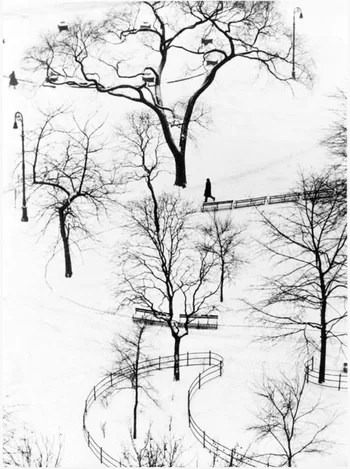

“Carrefour Blois” (1930): The puzzling configuration of lines and shapes of architectual elements seen from above serve as a foil for the animate forms – horses and humans on bicycles – resulting in a refreshing scene normally seen from street level.
“Washington Square Park, New York” (1954): Kertész moved to the United States in the 1930s, and this image from the 1950s is a classic representation of his street photography. It captures a poignant moment in Washington Square Park, emphasizing the human element within the urban environment.
These are just a few examples of André Kertész’s extensive and diverse portfolio. His work has left a lasting impact on the world of photography, influencing subsequent generations of photographers and artists.
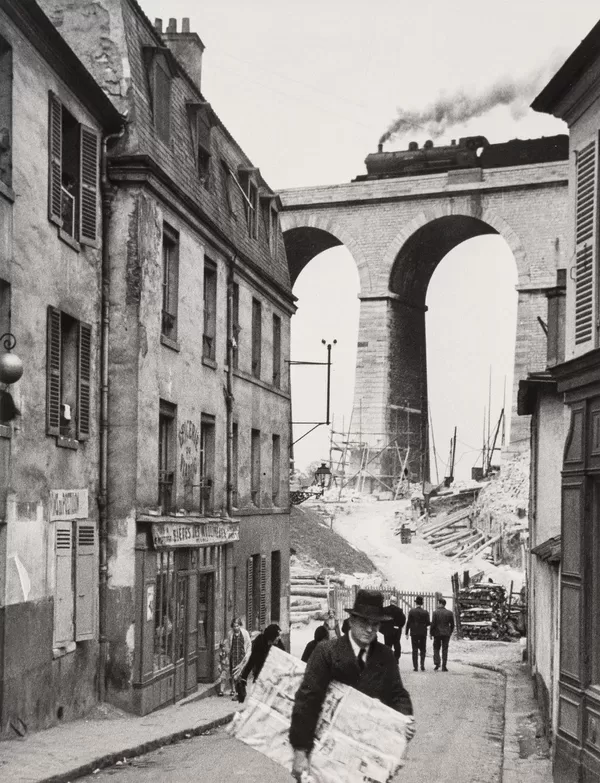

Related stories
Sarah Moon, French fashion photographer
Sebastião Salgado lens on Humanity’s Struggle and Resilience
Dorothea Lange’s Pioneering Approach to Portraiture
Australia’s first professional photographer George B Goodman
This Working Photographer’s Life: Rob Walls
Man Ray’s love-hate relationship with Hollywood
Heinrich Hoffman photographs Adolf Hitler public speaking
Susan Sontag’s essay ‘Photography’ 50 years on
Was Peter Lik’s world record Phantom photograph a good deal
Robert Capa, a prolific & great war photographer
Gregory Halpern “somewhere between the documentary and fine art”

